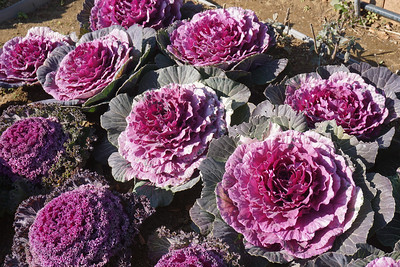
Kale: Super Food
Over the years, Kale has gained popularity in the United States and has become a common vegetable served at many dinner tables and restaurants. Kale is a green super food and can be eaten raw or cooked. Numerous celebrity chefs and food magazines have come up with easy, delicious ways to prepare this healthy vegetable, and the rest of the world is starting to ride the kale bandwagon.
Kale plantation in Hokkaido
Kale is said to originate in Europe where the curly and flat-leafed varieties already existed in Greece in the 4th century B.C.E. Romans referred to these as Sabellian kale which later on evolved into modern kale. It was later brought into Canada and the United States by the Russians in the 19th century. Since kale was easy to grow and provided important nutrients, its production was encouraged during World War II when food rationing was rampant.
Kale is more commonly known as a leafy, dark green vegetable, although it may also come in a variety of colors like white, purple, and pink. It belongs to the cabbage family, but it does not grow in a tight bound head–rather, in fibrous stalks from the center.
Kale can easily flourish even in cold temperatures, hence its growing popularity around the world. In Japan, kale was initially used for ornamentation. If the English recognized the value of the nutritional benefits of kale as a viand during World War II, the Japanese popularized it as a drink called aojiru.
Aojuri – green vegetable drink
Aojiru (青汁) is commonly known as green juice and is made primarily of kale. It was developed in 1943 by Dr. Niro Endo, an army doctor who experimented with juice from discarded leaves of different types of vegetables in an attempt to supplement his family’s dietary needs during WWII. He believed his son was cured from pneumonia and his wife from nephritis by aojiru. In 1983, Q’SAI began marketing 100% kale aojiru in powdered form as a dietary supplement.
Some of the benefits of kale are that it contains high concentrations of calcium, sulphur-containing phytonutrients, antioxidant vitamins A, C, and K, eye-health promoting lutein and zeaxanthin compounds, copper, potassium, iron, manganese, and phosphorus and, when eaten raw, kale binds bile acids, helps lower blood cholesterol levels, and reduces the risk of heart disease.


